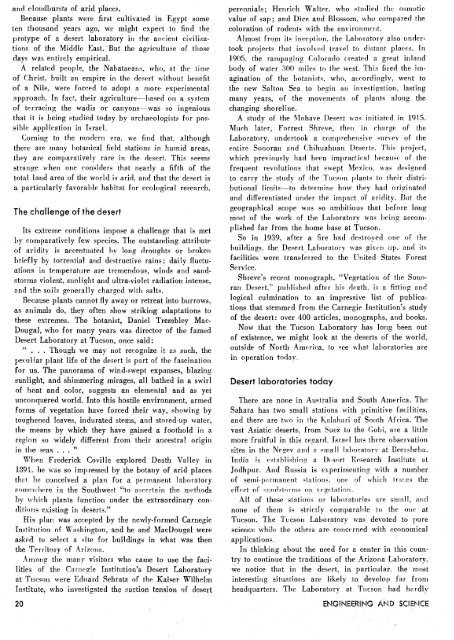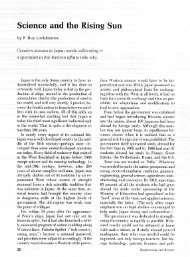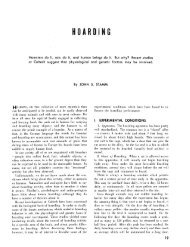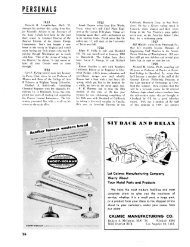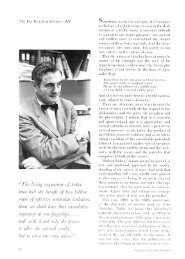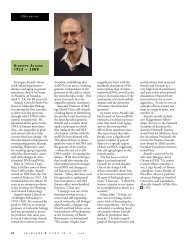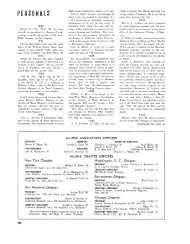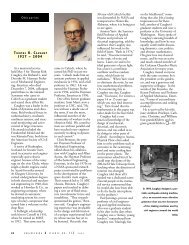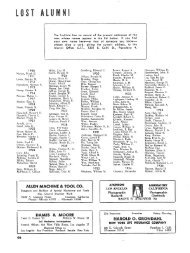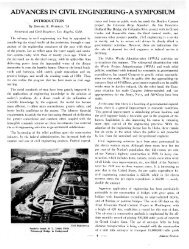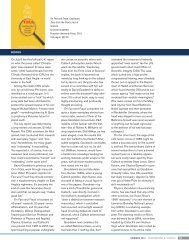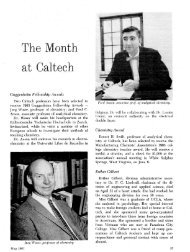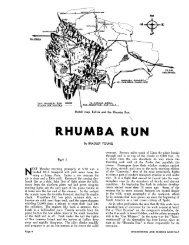PDF - Engineering & Science - California Institute of Technology
PDF - Engineering & Science - California Institute of Technology
PDF - Engineering & Science - California Institute of Technology
Create successful ePaper yourself
Turn your PDF publications into a flip-book with our unique Google optimized e-Paper software.
and cloudbursts <strong>of</strong> arid plares.<br />
Because plants were first cultivated in Egypt some<br />
ten thousand years ago, we might expect to find the<br />
protype <strong>of</strong> a desert laboratory in the an( ient civiliza-<br />
tion" <strong>of</strong> the Middle East. But the agriculture <strong>of</strong> those<br />
day was entirely empirical.<br />
A related people, the Nabataeanq, who, at the tirne<br />
<strong>of</strong> Christ, built an empire in the desert without benefit<br />
<strong>of</strong> a Nile, were forced to adopt a more experimental<br />
approach. In facb, their agriculture-based on a system<br />
<strong>of</strong> terracing the wadis or canyons-was so ingenious<br />
that it is being studied today by archaeologist? for pos-<br />
sihlf, application in Israel.<br />
Coming to the modern era. we find that. although<br />
there are many botanical field stations in humid areas.<br />
they are comparatively rare in the desert. This seems<br />
strange when one considers that nearly a fifth <strong>of</strong> the<br />
total land area <strong>of</strong> the world is arid. and that the desert is<br />
a particularly favorable habitat for ecolngiral researrh.<br />
The challenge <strong>of</strong> the desert<br />
Its extreme conditions impose a challenge that is met<br />
by coniparatively few species. The outstanding attribute<br />
<strong>of</strong> aridity is accentuated bv long droiights or broken<br />
briefly by torrential and destructive rains; daily fluctua~ions<br />
in temperature are tremendous, winds and sand-<br />
storms violent, sunlight and ultra-violet radiation intense,<br />
and the soil? generally charged with salts.<br />
Because plants cannot fly away or retreat into burrows,<br />
as animals do, they <strong>of</strong>ten show striking adaptations to<br />
these extremes. The botanist, Daniel Trernbley Mac-<br />
Dougal, who for many years was director <strong>of</strong> the famed<br />
Desert Laboratory at Tucson, once said:<br />
. . . Though we may not recognize it as such, the<br />
peculiar plant life <strong>of</strong> the desert ii part <strong>of</strong> the fascination<br />
for us. The panorama <strong>of</strong> wind-swept expanses, blazing<br />
sunlight, and shimmering mirages, all bathed in a swirl<br />
<strong>of</strong> heat and color, suggests an elemental and as yet<br />
uiiconquered world. Into this hostile environment, armed<br />
forms <strong>of</strong> vegetation have forced their way, showing by<br />
toughened leaves, indurated sterns, and stored-up water,<br />
the means by which they have gained a foothold in a<br />
region so widely different from their ancestral origin<br />
in the was . . . "<br />
When Frederick Coville explored Death Valley in<br />
1891. he was so impressed by the botany <strong>of</strong> arid places<br />
thnt lif conceived a plan for a permarient lahoriitory<br />
orn neb h~ re in the Southwest "in wrtain the rrir'[linds<br />
by M liich plants function under the extraordinary con-<br />
ditions existing in desert's."<br />
His plan was accepted by the newly-formed Carnegie<br />
Inqii~ntion <strong>of</strong> Washington, and he and MacDougal were<br />
asked to select a ci~e for buildings in what was then<br />
the T~rritoly <strong>of</strong> Arizona.<br />
Arnorig the main visitors who carne to use the facilitiei<br />
<strong>of</strong> the rarneo-ie fustitution's Desert Laboratory<br />
at Tt~'eori were Erlnard Schratz <strong>of</strong> the Kaiser Wilhelm<br />
<strong>Institute</strong>, who investigated the suction tension <strong>of</strong> desert<br />
perennials; Henrich Walter. who studied tlip osmotic<br />
value <strong>of</strong> sap; and Dice and Blossom, who cornpared the<br />
coloration <strong>of</strong> rodents with the envirorirneiit.<br />
Almost from it" inception. the Laboratory also under-<br />
took projects that involved travel to distant place?. In<br />
1905. the rampaging Colorado ( reate0 a great inla rid<br />
body <strong>of</strong> water 300 mile's to the west. Thi? fired the im-<br />
agination <strong>of</strong> the botanist-'. who. accordingly, werit to<br />
the new Salton Sea to begin an investigation, lasting<br />
many years, <strong>of</strong> the movements <strong>of</strong> plants along the<br />
changing shoreline.<br />
A study <strong>of</strong> the Mohave Pe~ert ha-i initiated in 1915.<br />
Much later, Forrest Shreve, then in charge <strong>of</strong> the<br />
Laboratory. undertook a cornpreheiisi\e qiinev <strong>of</strong> the<br />
entire Sonoran and Chihuahuan Desert". Thi's projert,<br />
which previously had been impractical because <strong>of</strong> the<br />
frequent revolutions that swept VIexico. wan de-signed<br />
to carry the study <strong>of</strong> the Tucson plants to their distri-<br />
butional limit'--to determine how they had originated<br />
and differeritia~ed iir~der the irnpact <strong>of</strong> aridity. But the<br />
geographical scope was so ambitious that before long<br />
most <strong>of</strong> the work <strong>of</strong> the Laboratory was Leingaccornplished<br />
far from the home base at Tucson.<br />
So in 1939, after a fire had destroyed one <strong>of</strong> the<br />
buildings, the Desert Laborator! wau given up. and its<br />
facilities were transferred to the United States Forest<br />
Service.<br />
Shreve's recent monograph. "Vegetation <strong>of</strong> the Sonoran<br />
De~~rt." puhli'-tied after his riea~h. i-= a fitting arid<br />
logical culmination to an impressive list <strong>of</strong> publications<br />
that stemmed from the Carnegie Institution's study<br />
<strong>of</strong> the desert: over 400 articles, monographs, and books.<br />
Now that the Tucson Laboratory has long been out<br />
<strong>of</strong> existence, we might look at the deserts <strong>of</strong> the world,<br />
outside <strong>of</strong> Nor~h America, to see what laboratories are<br />
in operation todav<br />
Desert laboratories today<br />
There are none in Australia and South America. The<br />
Sahara has two small stations with primitive facilities.<br />
and there are two in ihe halahari <strong>of</strong> South Africa. The<br />
vast Asiatic deserts, from Suez to the Gobi, are a little<br />
more fruitful in this regard. Israel has three observation<br />
sites in the NPWV and a --mall laboratory at Beet-hetia.<br />
India i-- e


